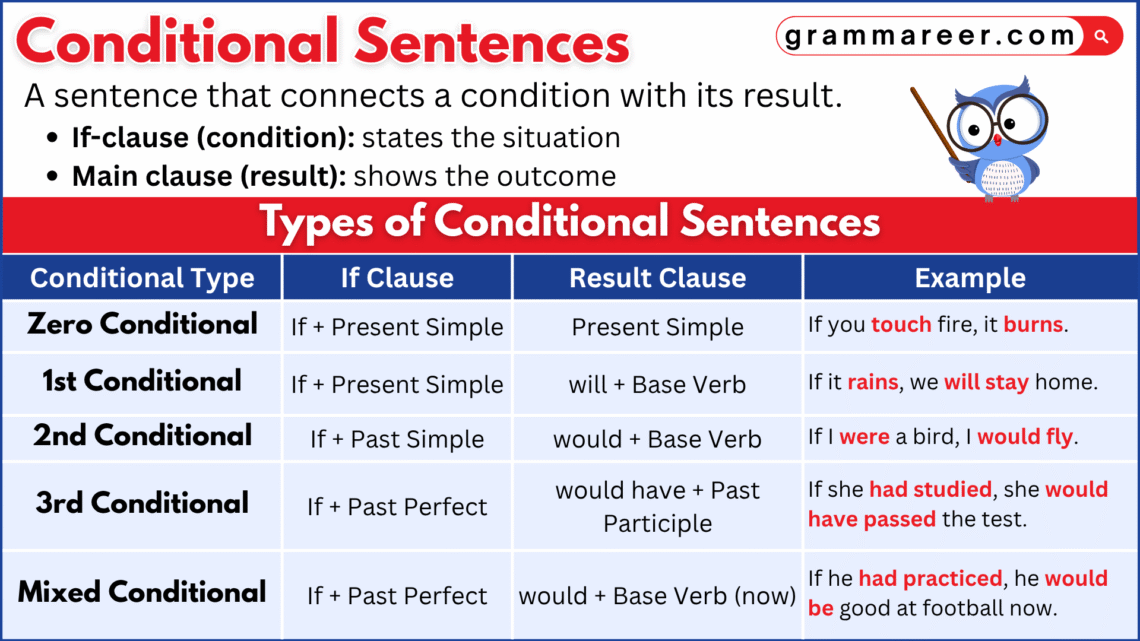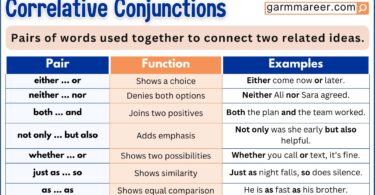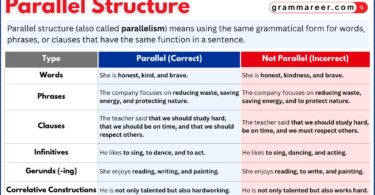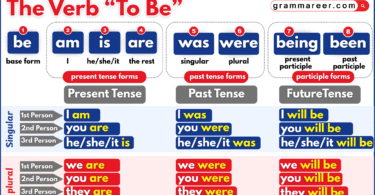Have you ever said something like “If I study hard, I’ll pass the test” or “If I had more money, I’d buy a new car”? That’s a conditional sentence. The truth is, we use conditionals all the time without even thinking about it.
The tricky part comes when we try to learn the grammar rules behind them. For many learners, conditionals feel complicated or even boring. But here’s the thing: they’re not just grammar rules—they’re tools that let you talk about real life, your plans, your dreams, and even your regrets.
In this article, we’ll learn the main types of conditional sentences, explain how they work, and give you examples you can actually use in everyday English.
Table of Contents
What Are Conditional Sentences?
A conditional sentence is a way to show that one thing depends on another. It connects a condition with a result like what might happen, what could have happened, or what will happen if something else is true.
For example:
- If the Wi-Fi goes out, I can’t finish my work.
- The first part “the Wi-Fi goes out” is the condition, and the second part “I can’t finish my work” is the result.
Conditional sentences like these let us talk about real situations, possible outcomes, and even imagined scenarios. They’re part of how we explain everyday cause and effect in English.
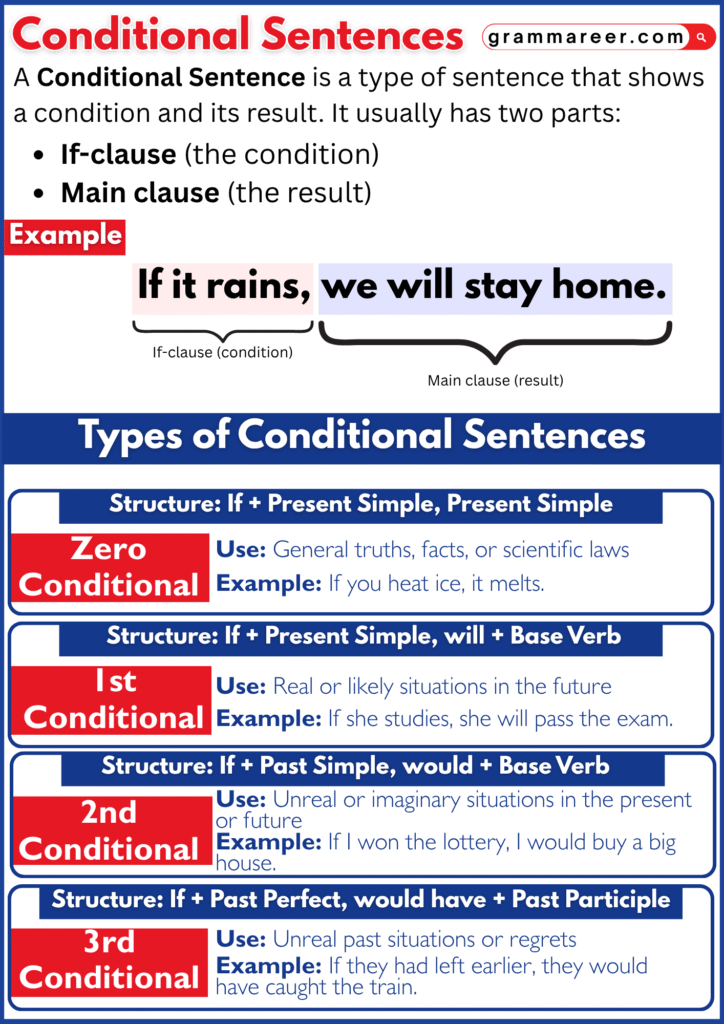
Using Conditional Sentences
Conditional sentences are all about “cause and effect.” They let us talk about what could happen if something else takes place. In simple terms, you set up a condition, and then you explain the result.
A conditional sentence has two parts:
- The condition – the situation we’re imagining
- (e.g., “If the power goes out”)
- The result – what happens because of it
- (e.g., “we’ll have to light some candles”)
Most of the time, we use the word if to show the condition. Sometimes people also use phrases like as long as, provided that, or whether or not to express the same idea.
Conditional sentences pop up in everyday life all the time:
- If my phone battery dies, I’ll borrow a charger at Starbucks.
- If the traffic is heavy, we’ll miss the movie.
- If the Yankees win tonight, we’ll celebrate with pizza.
Notice something? You can flip the order of the clauses and the meaning stays the same:
- We’ll celebrate with pizza if the Yankees win tonight.
Conditionals are simple, but very crucial. They’re the sentences we use to make plans, set rules, and even dream a little about the future.
The 4 Types of Conditional Sentence
There are four main types of conditional sentences, and here’s a simple explanation of each:
| Type | What It Does | Example |
| Zero Conditional | Talks about facts or things that always happen | If you heat water to 100°C, it boils. |
| First Conditional | Describes real possibilities in the future | If it rains tomorrow, we’ll stay inside. |
| Second Conditional | Imagines unlikely or unreal situations | If I lived in New York, I’d take the subway every day. |
| Third Conditional | Thinks about the past and how it could have been different | If I had left earlier, I wouldn’t have missed the train. |
Zero Conditional Sentences
The zero conditional is the easiest one. We use it for things that are always true—facts, rules, or habits. Both parts of the sentence usually use the simple present tense.
| Structure: If/When + Present Simple, Present Simple |
Using the Zero Conditional Sentences
We use zero conditional sentences to talk about scientific facts, routines, or things that always happen.
For Example:
- If you leave milk out in the sun, it goes bad.
- When the light turns green, drivers go.
- If you don’t water the grass in July, it turns brown.
This type of conditional is like common sense—you’re not talking about the future or imagination, just everyday truths.
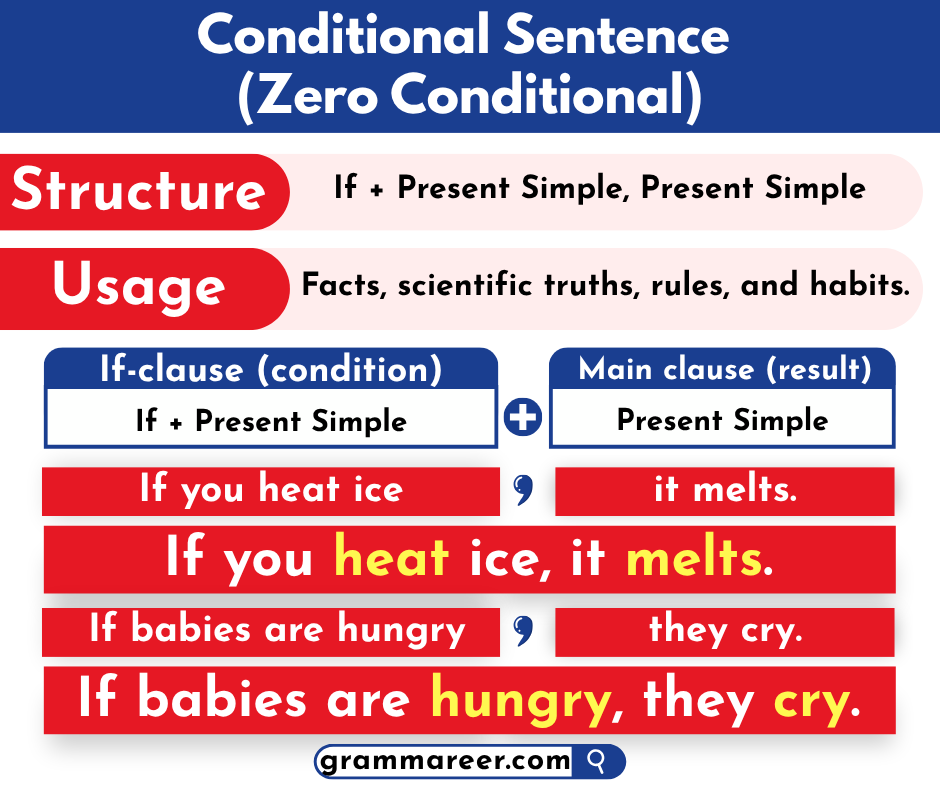
First Conditional Sentences
The first conditional talks about things that might realistically happen in the future. It’s about “if this happens, then that will happen.”
| Structure: If + Present Simple, Will + Base Verb |
Using the First Conditional Sentences
We use first conditional sentences to predict real outcomes in the future, often when making promises, warnings, or plans.
For Example:
- If the weather is nice this weekend, we’ll have a barbecue.
- If the traffic is heavy, I’ll be late to work.
- The kids will be upset if the Wi-Fi goes out.
Did you notice? we use the present tense after if and “will” (or sometimes “might,” “can,” or “may”) in the result.
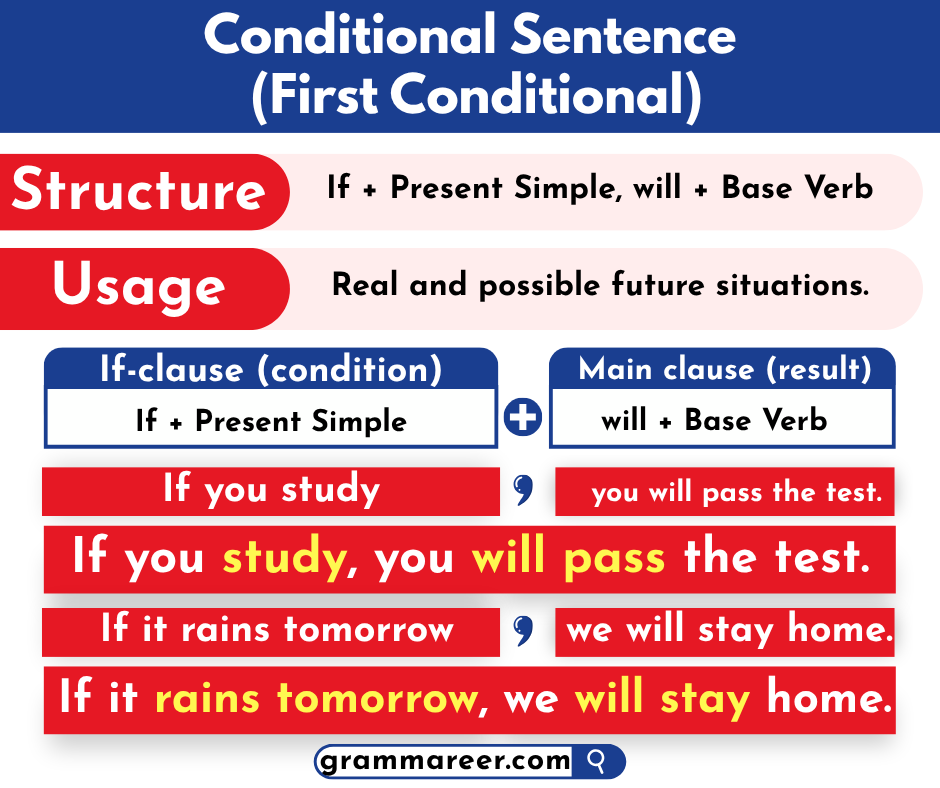
Second Conditional Sentences
The second conditional is for imagining things that aren’t true right now or aren’t likely to happen. It’s the grammar of daydreams and “what ifs.”
| Structure: If + Past Simple, Would + Base Verb |
Using the Second Conditional Sentences
We use them to talk about dreams, wishes, or unlikely situations in the present or future.
For Example:
- If I won the lottery, I’d buy a beach house in Florida.
- If I were taller, I would try out for the NBA.
- If gas were cheaper, more people would take road trips.
This is where English gets some fun, because you can imagine anything even the things that aren’t possible.
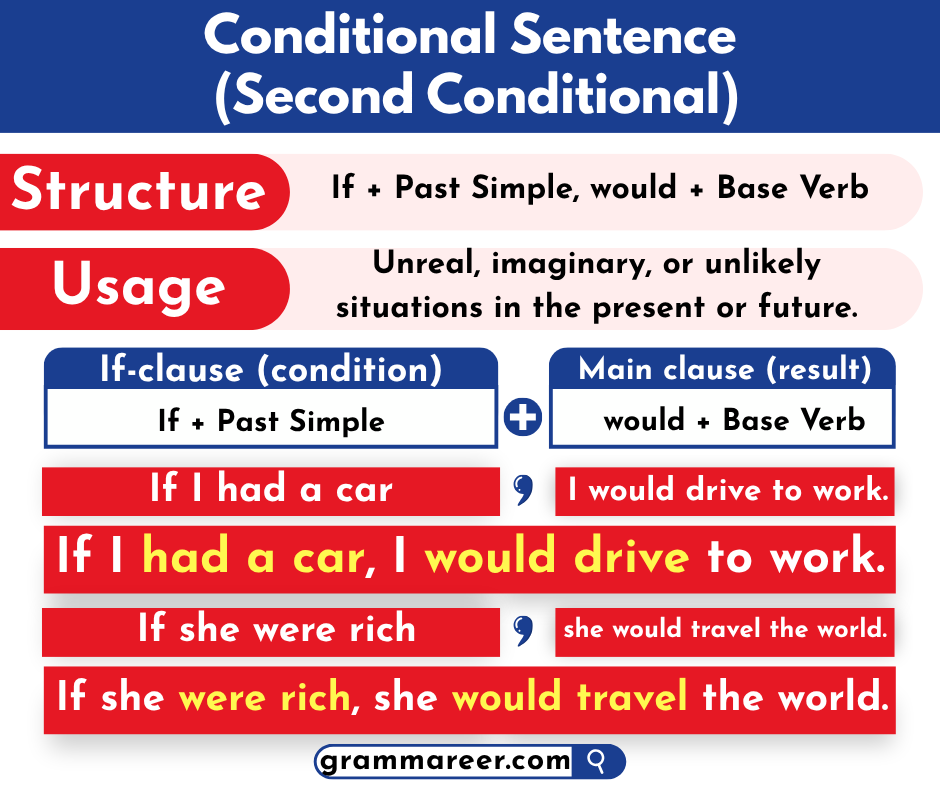
Third Conditional Sentences
The third conditional is for talking about past situations that didn’t happen and imagining how things could have turned out differently.
| Structure: If + Past Perfect, Would Have + Past Participle |
Using the Third Conditional Sentences
We use third conditional sentences to express regret, blame, or relief about past events.
For Example:
- If I had studied harder, I would have passed the exam.
- We would have made the flight if we had left earlier.
- If the quarterback had thrown the ball sooner, the team would have won.
Perfect for showing regrets like “should haves,” and “could haves.”
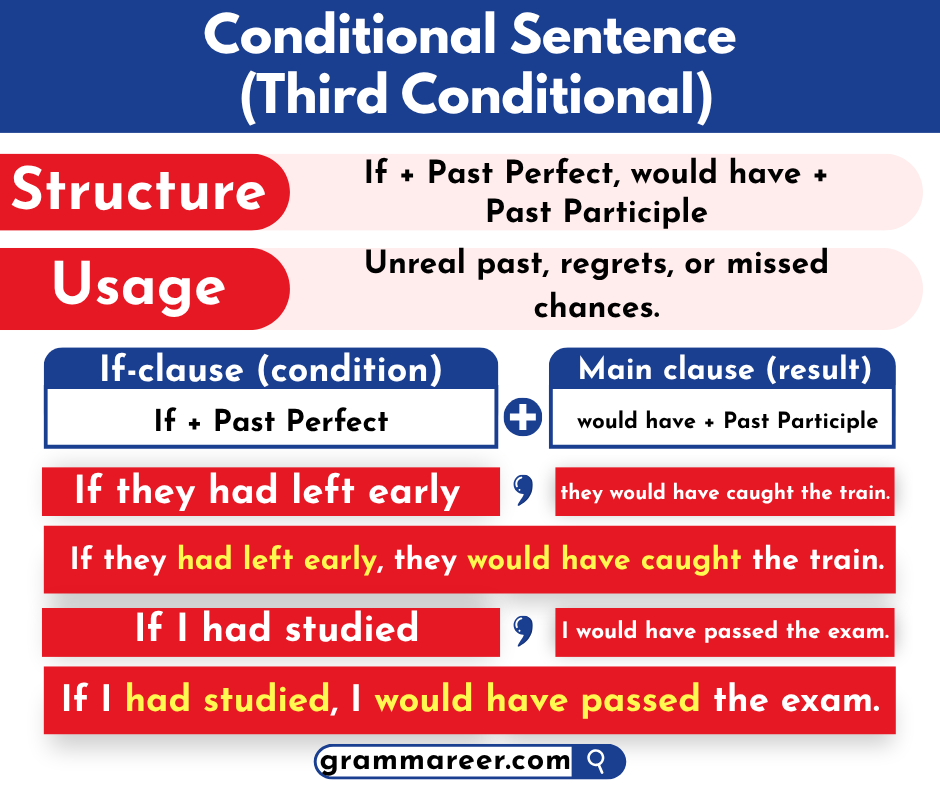
Mixed Conditional Sentences
Mixed conditionals happen when the condition is in the past, but the result is in the present (or the other way around).
| Structure 1: If + Past Perfect, Would + Base Verb |
Example:
- If I had finished college, I’d have a better job now.
| Structure 2: If + Past Simple, Would Have + Past Participle |
Example:
- If I were more confident, I would have spoken at the meeting.
Using the Mixed Conditional Sentences
These are used to connect past actions with present results, or present conditions with past results.
For Example:
- If I had finished college, I’d have a better job now.
- If I were more confident, I would have spoken up at the meeting.
Summary
As we learned, conditional sentences link a condition to its result, helping us talk about facts, possibilities, and imagined situations in everyday English. There are four main types: the zero conditional for general truths, the first conditional for real future chances, the second conditional for unlikely or imaginary events, and the third conditional for past situations that never happened. Together, they give us simple ways to express cause and effect, future plans, daydreams, and even regrets, making conversations sound more natural and relatable.
FAQs about Conditional Sentences
A conditional sentence describes a situation and its possible result. It usually has two parts: the if-clause (condition) and the main clause (result).
There are four main types: zero, first, second, and third conditionals. Each type shows a different time or level of possibility.
The first conditional talks about real future possibilities
Example: (If it rains, we will stay inside).
The second conditional talks about unreal or imaginary situations
Example: (If I won the lottery, I would travel the world).
Yes, absolutely! You just need to add a comma after the if-clause. For example: If you work hard, you will succeed.
The biggest mistakes are mixing up tenses and adding “will” where it doesn’t belong.
For example:
❌ If you will study, you will pass. should be
✔️ If you study, you will pass.
You May Also Like

